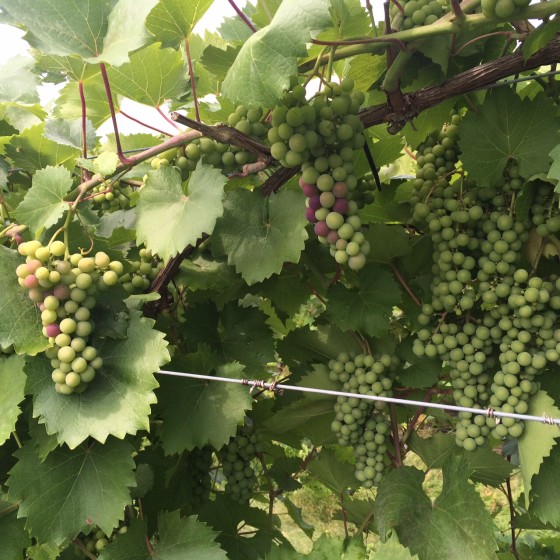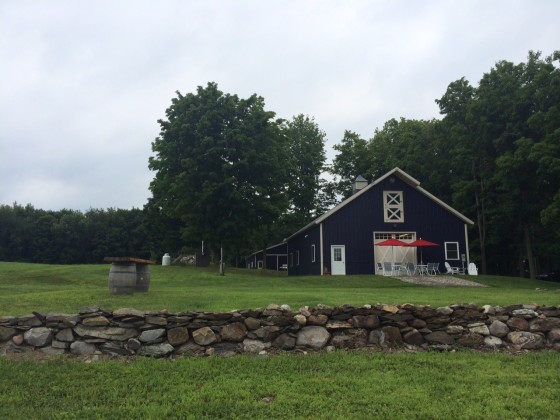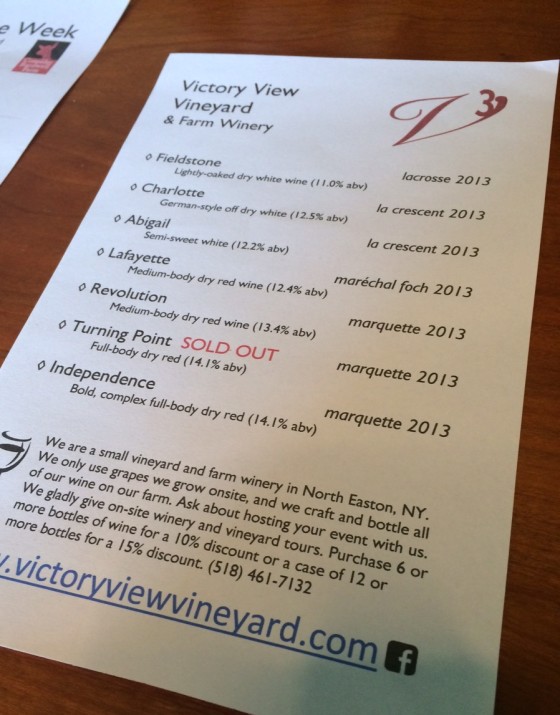In 1777, the Battle of Saratoga was declared a decisive turning point in the struggle for American independence. Just a few miles from that pivotal ground, Victory View Vineyard slopes in three directions spinning from Southeast to Southwest situated along the local highway, NY State Route 40, and there they are firing warning shots that herald a new revolution in upstate New York agriculture. The site was selected because of its visibility from the road but it turned out to be a lucky choice because it turns out to be excellent for both air and water drainage. Mary and Gerry Barnhart have a little under four acres under cultivation and are dialed in so that two people can work it efficiently…but there are at least another 12 acres of so on the land that are open for the trellis. It took a couple of years of preparation with the removal of overgrown hedgerows and the installation of wetlands before for the site was ready for vines… an investment in the currency of patience, well worth it, as it shows in the final product.
Gerry had been working for New York Fish and Wildlife Service for several years in the Adirondacks before he got the call to work in Albany and found this piece of land in Schaghticoke that was about 45 minutes commute from the office. They always thought they’d like to farm the land but it wasn’t until the arrival of the modern hybrid vines that the vague notion of planting a vineyard became reality. They have a very practical, purpose-built winery building with the tasting room in front and ample space for crush and aging, as well as the seasonal events that they host. The place is clean and well-organized just as the vineyard outside, and it is reflected in the wines that are produced there. They take a pragmatic approach to both vineyard and wine making opting for an IPM management program with just a handful of sprays and a very basic wine making protocol after the crash pad.
Victory View has been getting around recently as it was a guest producer at TasteCamp 2014 in the Hudson Valley and Gerry was a keynote speaker at the Vermont Grape and Wine Council annual conference in June. It’s no surprise because they are bottling interesting and compelling versions of cold-climate fruit. The V3 lineup includes a stainless steel fermented La Crescent, an oak aged La Crosse, a Marechal Foch and three variations of Marquette. The whites are lively and aromatic as to be expected and the La Crosse makes me wish that more people would look at this grape as a colder-climate alternative to Seyval Blanc. The Foch is fresh and round and also begs for more attention to this classic variety. The Marquettes aspire the show the flexibility of this vine because, so one batch is picked earlier resulting in an ABv of 13.6% for 2013, The other batch is picked later finishing a wine at 14.1%. Yes, that’s right, Marquette can easily achieve such levels, and could go higher in some vintages and locations.

While the first pick is aged in stainless steel with oak staves the latter two lots are split into French oak and American barrels to be bottled separately. They all show the hallmark rich, sour cherry of a ripe Marquette, and the aging program lends noticeable nuances. Originally all of the wines were priced at 17.77 to honor the date of the homeland victory just downslope of the farm, but now the price on Marquette goes from $15, $20 to $25 to accurately reflect the cost of production. They are still delivering wines that are a small-lot, rare-experience bargain at that price.
On the day I visited, I witnessed something that I had heard about from others, and that Gerry had also related… A taster was about to beg off of trying the red wines saying that they just didn’t like red wines from New York because they were too thin and acidic. Jerry convinced her to try and her eyes lit up…she was an instant convert to the north country cause. Gerry is just starting to think about moving past varietal wines and is looking at blending the Foch and the Marquette. It’s an idea, which based only on a quick tasting-bar-top experiment, could be yet another winning strategy in this revolution on the northern frontier of wine making.



